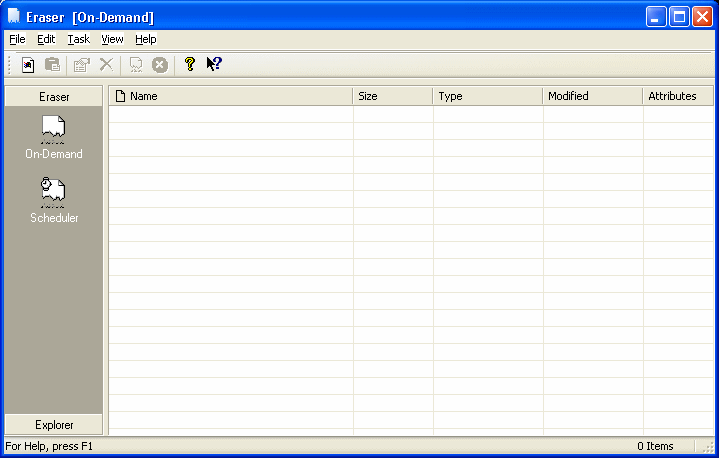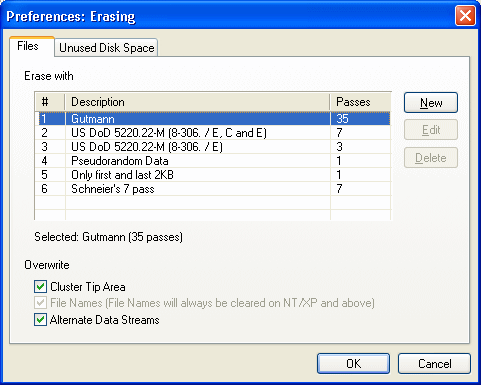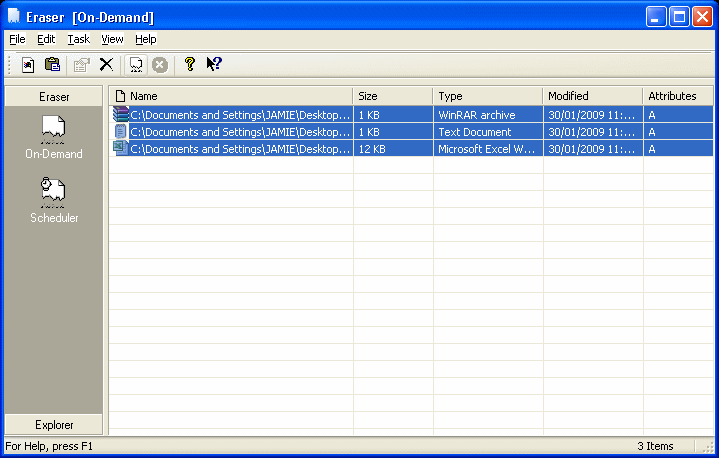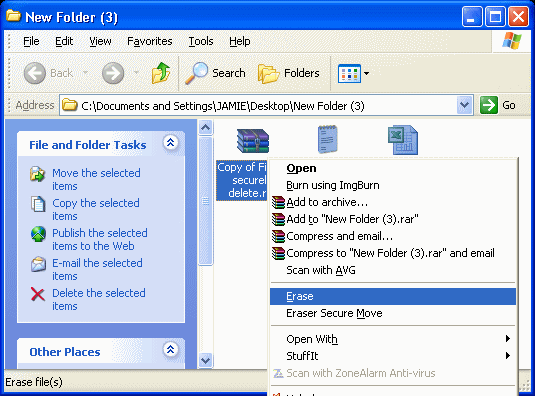| How to Securely Delete Files | Viewing Page 1 -- Go To |
How to Securely Delete Files
 When you delete files, the data still resides on your hard drive. When more files are written to the drive, this data gets over-written, but the filename records and other information is still easily recoverable usually. What then, if you have sensitive or private data on your computer? What if sensitive or private data has already been deleted and could be recovered? One example of where this could be a big problem is when selling on your computer with the operating system and file system still intact, especially if you have had private files (such as business related files or C.V.s) on the computer. This article shows now only how to delete files beyond recovery, it also shows how to stop previously deleted files from being recovered.
When you delete files, the data still resides on your hard drive. When more files are written to the drive, this data gets over-written, but the filename records and other information is still easily recoverable usually. What then, if you have sensitive or private data on your computer? What if sensitive or private data has already been deleted and could be recovered? One example of where this could be a big problem is when selling on your computer with the operating system and file system still intact, especially if you have had private files (such as business related files or C.V.s) on the computer. This article shows now only how to delete files beyond recovery, it also shows how to stop previously deleted files from being recovered.Introduction & Requirements
| Software you must download and install | |
| Eraser | |
| Required: Eraser is the software we will use for this guide. It is completely free. Download! |
Download the Eraser installer onto your hard drive and run it. Once the installation is completed you will have an Eraser shortcut on your Desktop as well as in the Start Menu. When you are done, run the program.
Securely Delete Files - Eraser [On-Demand]

The Eraser program has two modes that it can be run in. The default mode is Scheduler. I don't particularly like this mode. Click the On-Demand option on the side and you will see by the title bar that the program is now in On-Demand mode. It is now possible to add files to this program and securely delete them, but firstly we have to choose some settings.
File Erasing Preferences

Click Edit --> Preferences --> Erasing. The window that you can see above will now show up. This is really not that complicated, you have a number of secure Erasing options and a number of passes required to carry them out. Option 5 (Only first and last 2KB) should NOT be selected. Any of the other options are pretty much fine. The one selected above is the Gutmann method, which uses 35 special overwriting patterns that are designed to over-write data properly on a number of different hard drive types. However, with modern hard-drives even a single over-write is sufficient (Option 4 - Pseudorandom Data). The more over-write passes specified, the longer this will take.
At the bottom, make sure "Cluster Tip Area" and "Alternate Data Streams" are selected when available. When you pick an over-writing choice, click OK.
Add Files to Eraser for Deletion

To add a file to Eraser in order to make it unrecoverable, simply drag and drop files into eraser as shown above. When you have added all the files you want to destroy, then select them all by press CTRL + A simultaneously. Now click Task --> Run (or CTRL + R).
Warning

You will now get a warning message that you must pay attention to. You are about to make files completely unrecoverable - in other words you are going to destroy them completely. Please make sure you are done with the files you have on the list before you carry out this operation. If you are ready and full sure you aren't about to make a huge mistake, click Yes.
File Erasing Process

The amount of time it will now take to overwrite the files depends on the number of passes the deletion method you selected will employ. If the files are large, this might take a long time to complete. When it is done, you will not be able to recover the data (at least not with any commercial recovery tools currently available, and it's unlikely full recovery will be achievable in any case for a very long time if ever.)
Eraser - Quicker Method

If you don't want to have to run Eraser every single time that you want to delete a bunch of files, or just a single file, then you will be happy to see that Eraser has added options to the right-click menus in explorer. Simply right click any file and click Erase. The method for over-writing will be whatever you set it to on the program, but if you want to change it, there will be an "Options" button available after you click Erase.
What Next?
If you simply wanted to delete some files beyond recovery, you are done. But if you want to make sure files you deleted in the past are unrecoverable, then move to the next page to learn how to Erase your free space, as strange as that may sound.
Page 2 - Overwrite Free Space
| How to Securely Delete Files | Viewing Page 1 -- Go To |
Written by: James Delahunty

